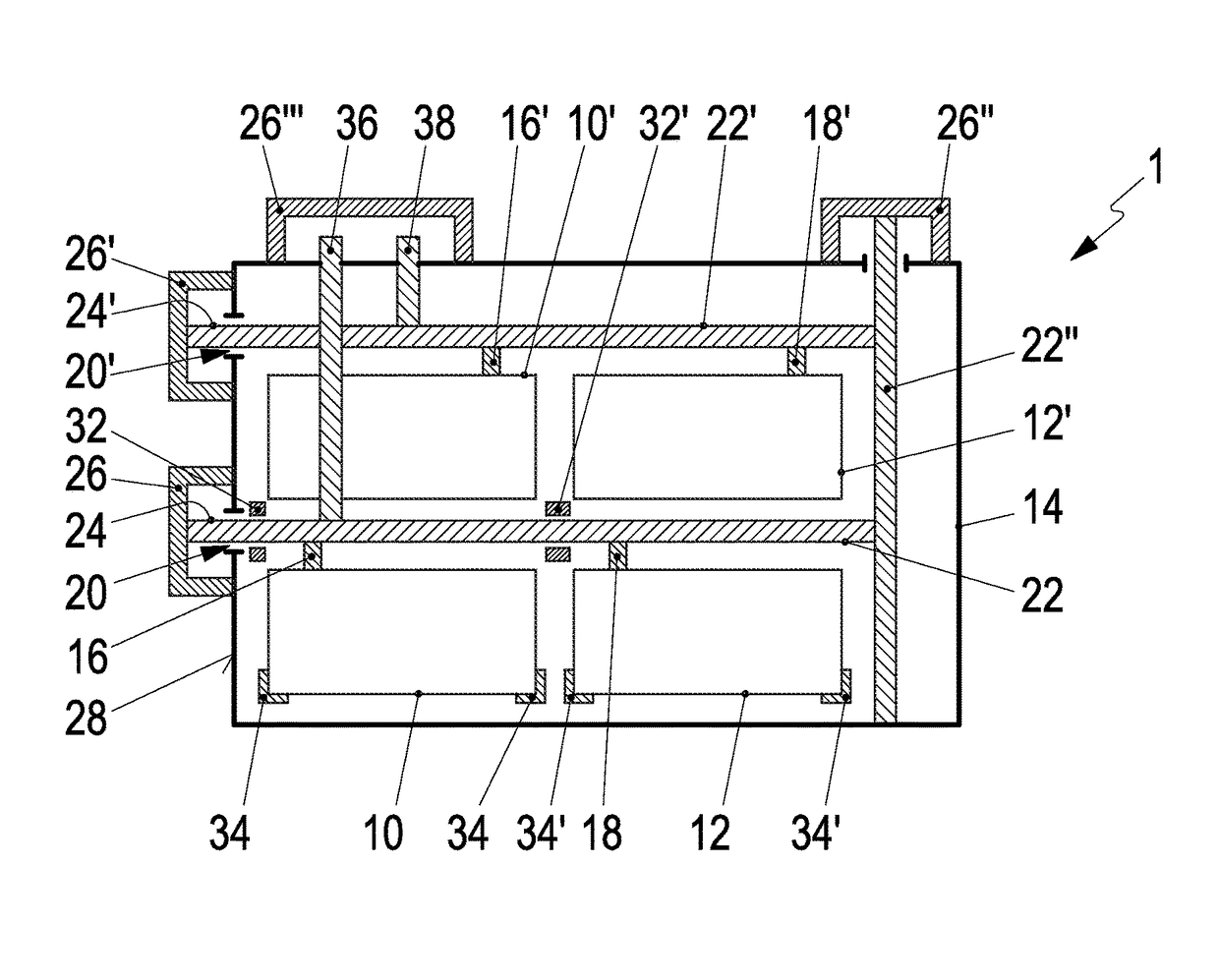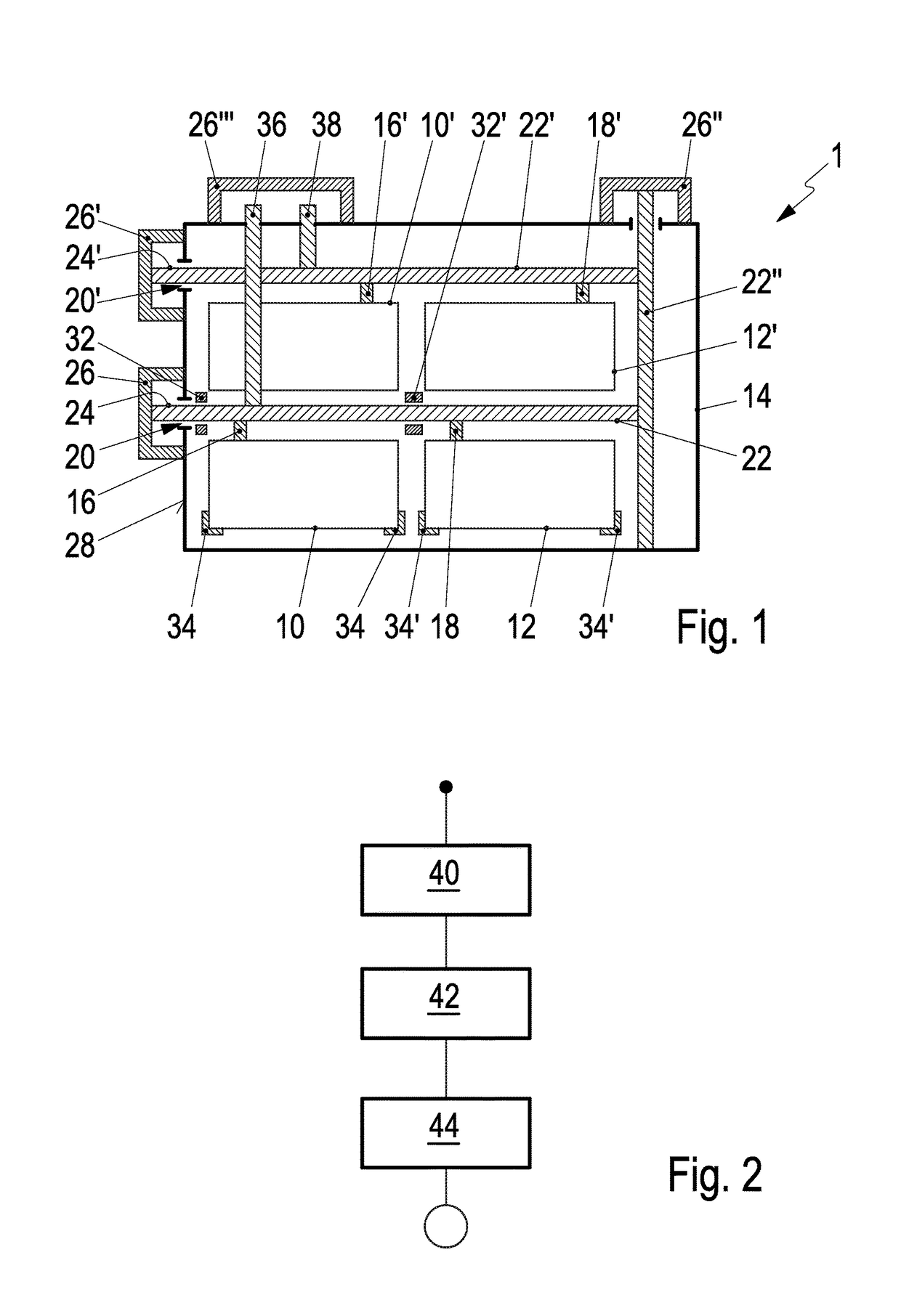Battery unit having at least one first battery module and at least one second battery module in a battery housing
a battery module and battery technology, applied in the direction of batteries, cell components, cell component details, etc., can solve the problems of endangerment of fitters and exposed electrical connections, and achieve the effect of safe electrical mounting and reliably protecting against high voltag
- Summary
- Abstract
- Description
- Claims
- Application Information
AI Technical Summary
Benefits of technology
Problems solved by technology
Method used
Image
Examples
Embodiment Construction
[0022]FIG. 1 shows a battery unit 1 that has a battery housing 14. A first battery module 10 and a second battery module 12 are arranged in a first level in the battery housing 14. The first battery module 10 is held in the battery housing 14 in an interlocking manner by a holding element 34, and the second battery module 12 similarly is held in the battery housing 14 in an interlocking manner by a holding element 34′. The first battery module 10 has a first electrical connection 16 and the second battery module 12 has a second electrical connection 18. An electrically conductive element 22 is arranged in the battery housing 14 and can be inserted into the battery housing 14 through an opening 20. An insulating element 26 is arranged at a first end 24 of the electrically conductive element 22 and can be produced from plastic. In this case, the electrically conductive element 22 is inserted into the battery housing 14 so that the insulating element 26 comes to rest directly against a...
PUM
| Property | Measurement | Unit |
|---|---|---|
| total voltage | aaaaa | aaaaa |
| total voltage | aaaaa | aaaaa |
| voltage | aaaaa | aaaaa |
Abstract
Description
Claims
Application Information
 Login to View More
Login to View More - R&D
- Intellectual Property
- Life Sciences
- Materials
- Tech Scout
- Unparalleled Data Quality
- Higher Quality Content
- 60% Fewer Hallucinations
Browse by: Latest US Patents, China's latest patents, Technical Efficacy Thesaurus, Application Domain, Technology Topic, Popular Technical Reports.
© 2025 PatSnap. All rights reserved.Legal|Privacy policy|Modern Slavery Act Transparency Statement|Sitemap|About US| Contact US: help@patsnap.com


